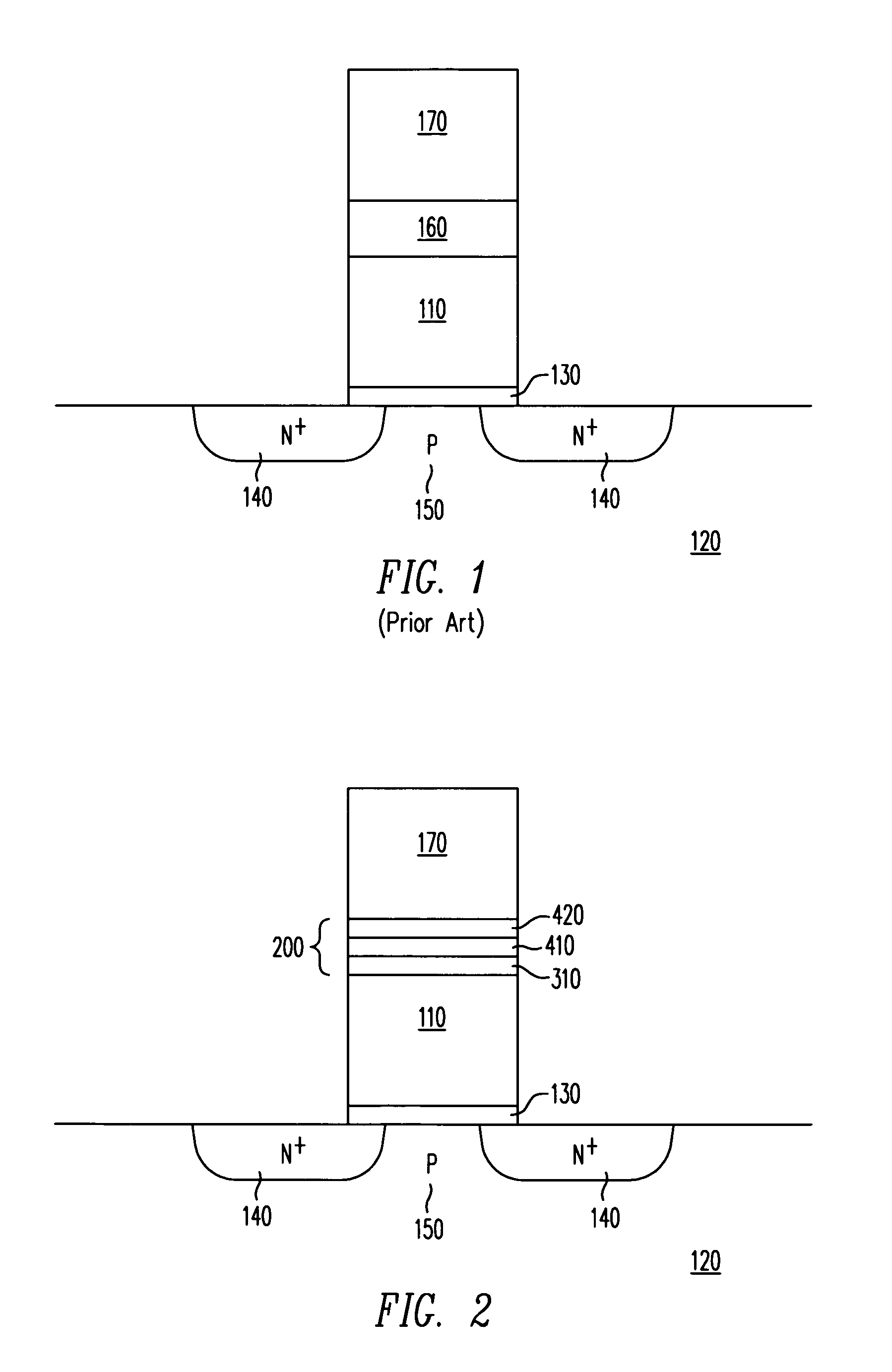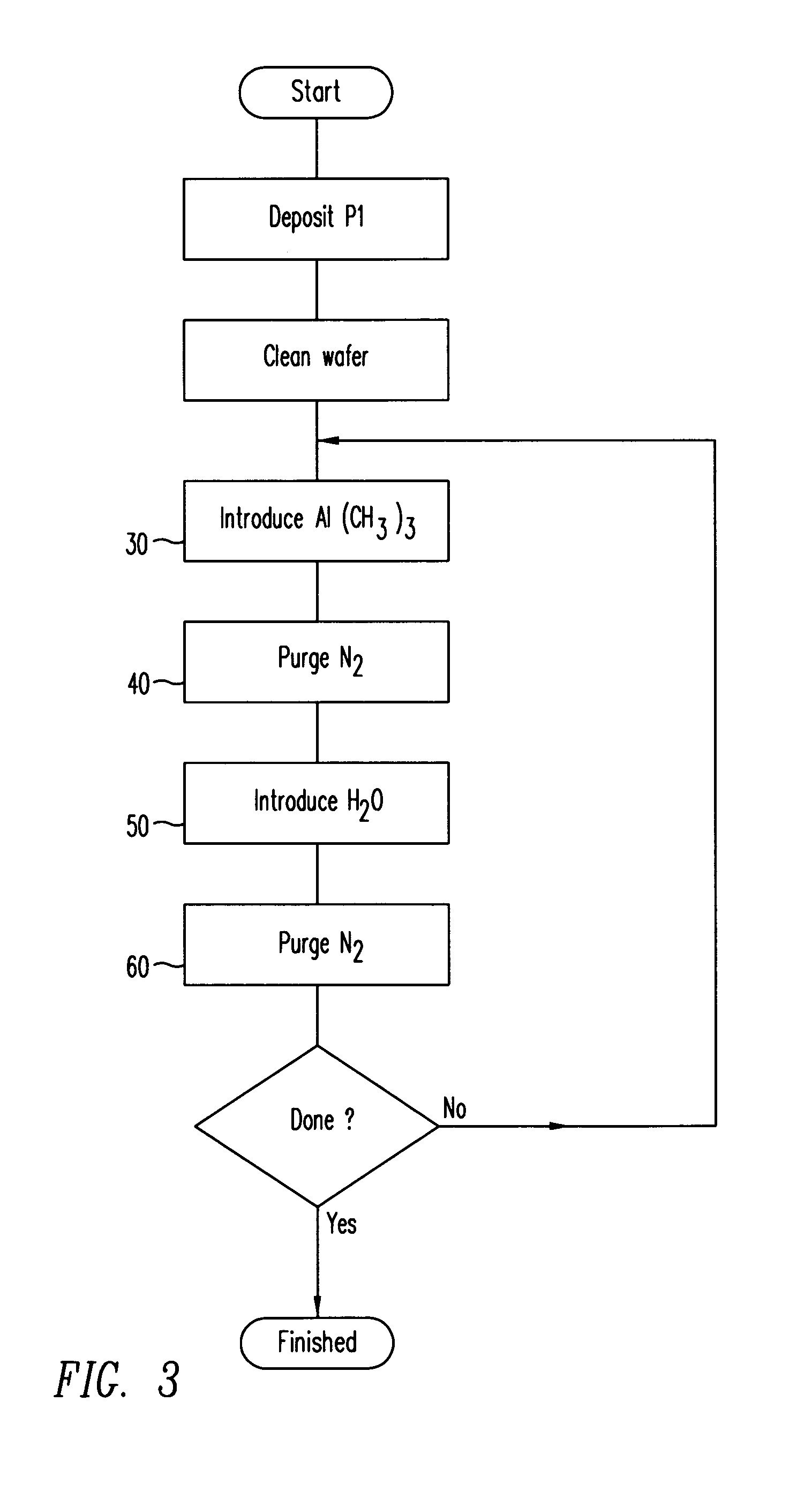Atomic layer deposition of interpoly oxides in a non-volatile memory device
a non-volatile memory and interpoly oxide technology, applied in the field of integrated circuits, to achieve the effect of reducing the number of defects
- Summary
- Abstract
- Description
- Claims
- Application Information
AI Technical Summary
Benefits of technology
Problems solved by technology
Method used
Image
Examples
Embodiment Construction
[0015]FIG. 2 illustrates a cross section of a nonvolatile memory cell at an intermediate stage of fabrication. In the illustrative embodiment being described, substrate 120 is a suitably doped (e.g. P-doped) monocrystalline silicon substrate; appropriate wells (not shown) have been formed in the substrate, as described in U.S. Pat. No. 6,355,524 entitled “Nonvolatile Memory Structures and Fabrication Methods”, filed Aug. 15, 2000 by H. T. Tuan et al., incorporated herein by reference. Other types of substrates, including non-silicon substrates, can also be used. The invention is not limited by any particular wells or doping types.
[0016]Source / drain regions 140 are formed by doping. Additional layers (not shown) may be formed to provide select gates, erase gates, or other features. See the aforementioned U.S. Pat. No. 6,355,524 B1 for an exemplary memory fabrication process that can be modified to incorporate the atomic-layer deposition oxide described above.
[0017]Semiconductor subst...
PUM
 Login to View More
Login to View More Abstract
Description
Claims
Application Information
 Login to View More
Login to View More - R&D
- Intellectual Property
- Life Sciences
- Materials
- Tech Scout
- Unparalleled Data Quality
- Higher Quality Content
- 60% Fewer Hallucinations
Browse by: Latest US Patents, China's latest patents, Technical Efficacy Thesaurus, Application Domain, Technology Topic, Popular Technical Reports.
© 2025 PatSnap. All rights reserved.Legal|Privacy policy|Modern Slavery Act Transparency Statement|Sitemap|About US| Contact US: help@patsnap.com



